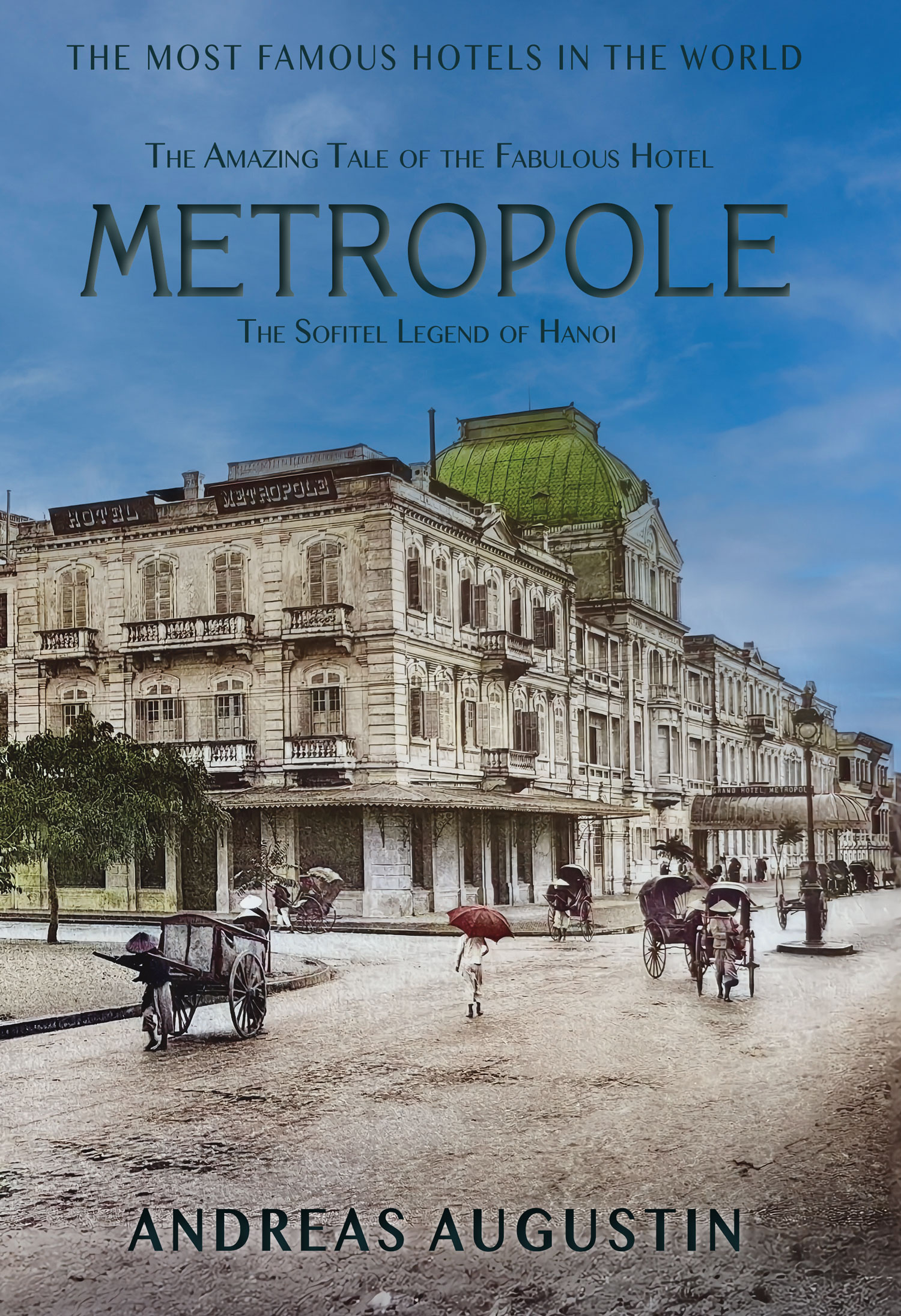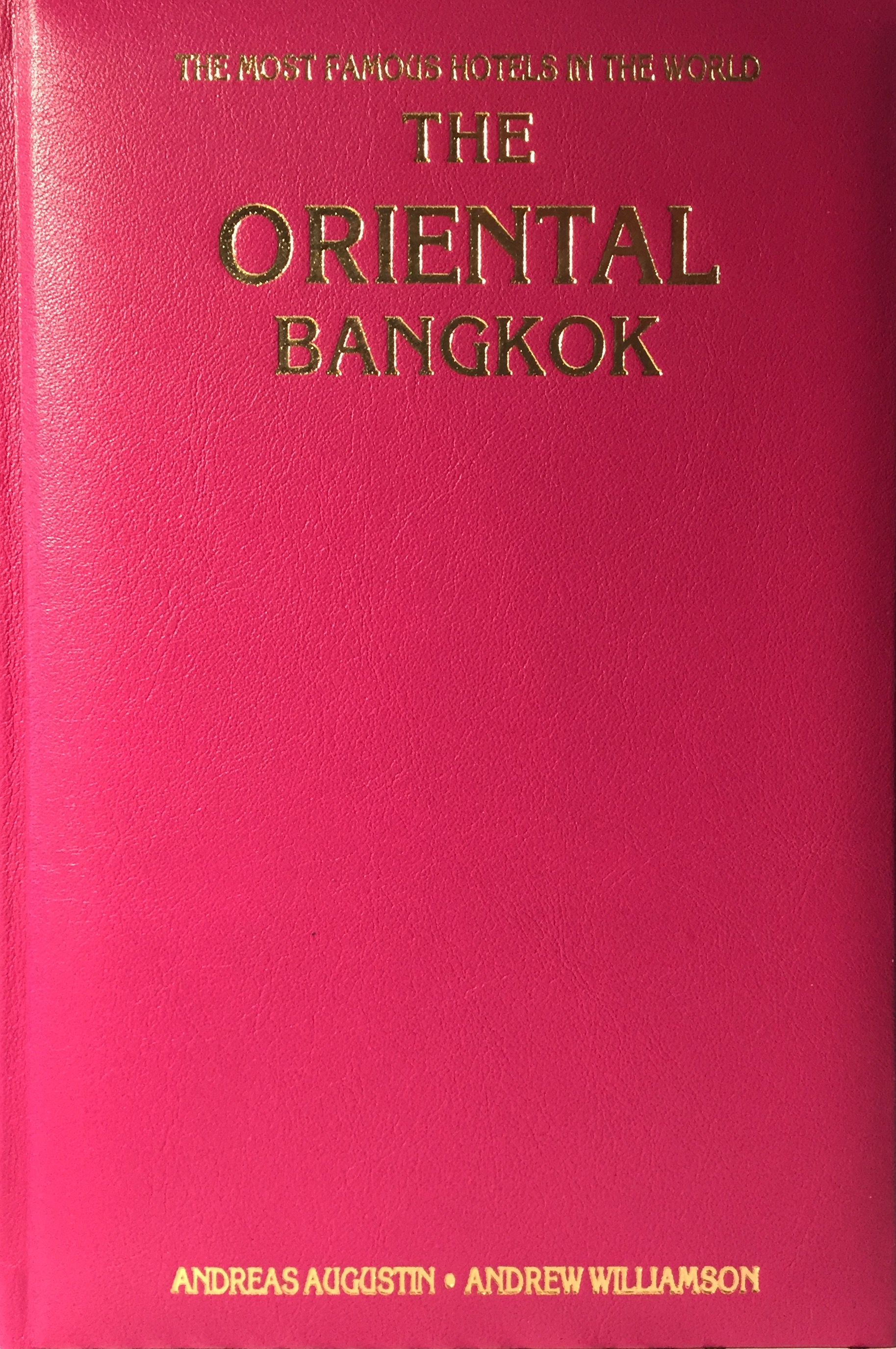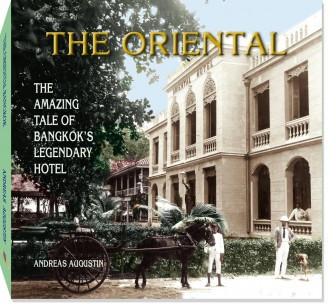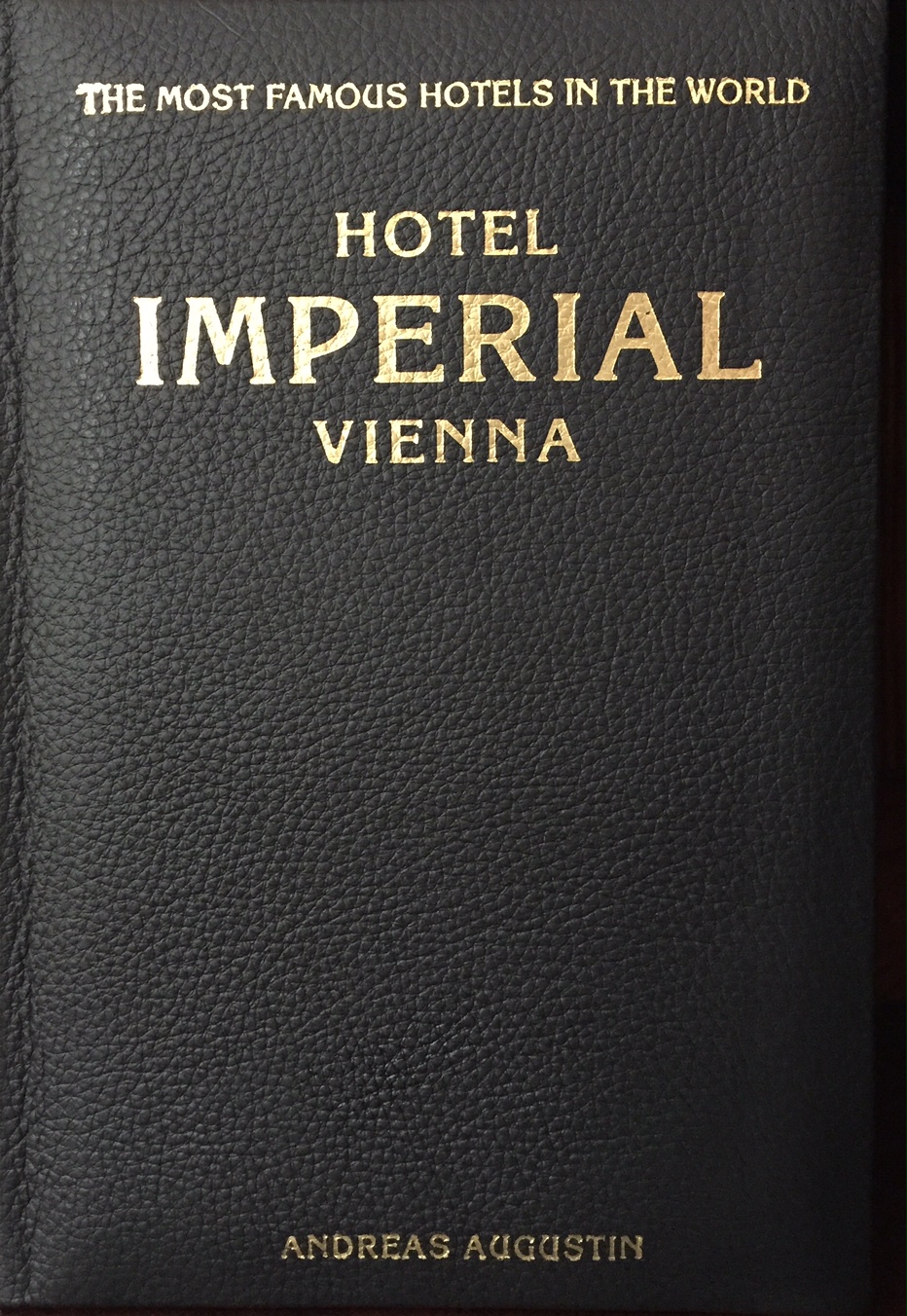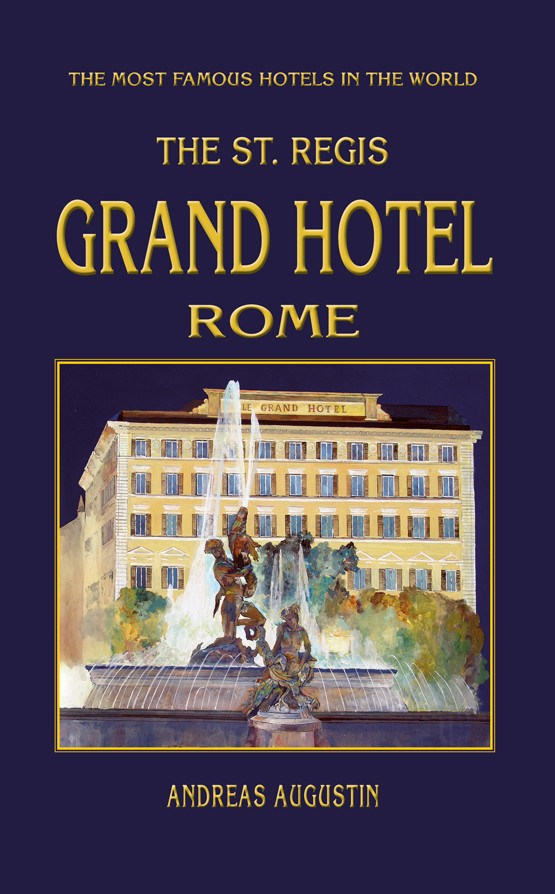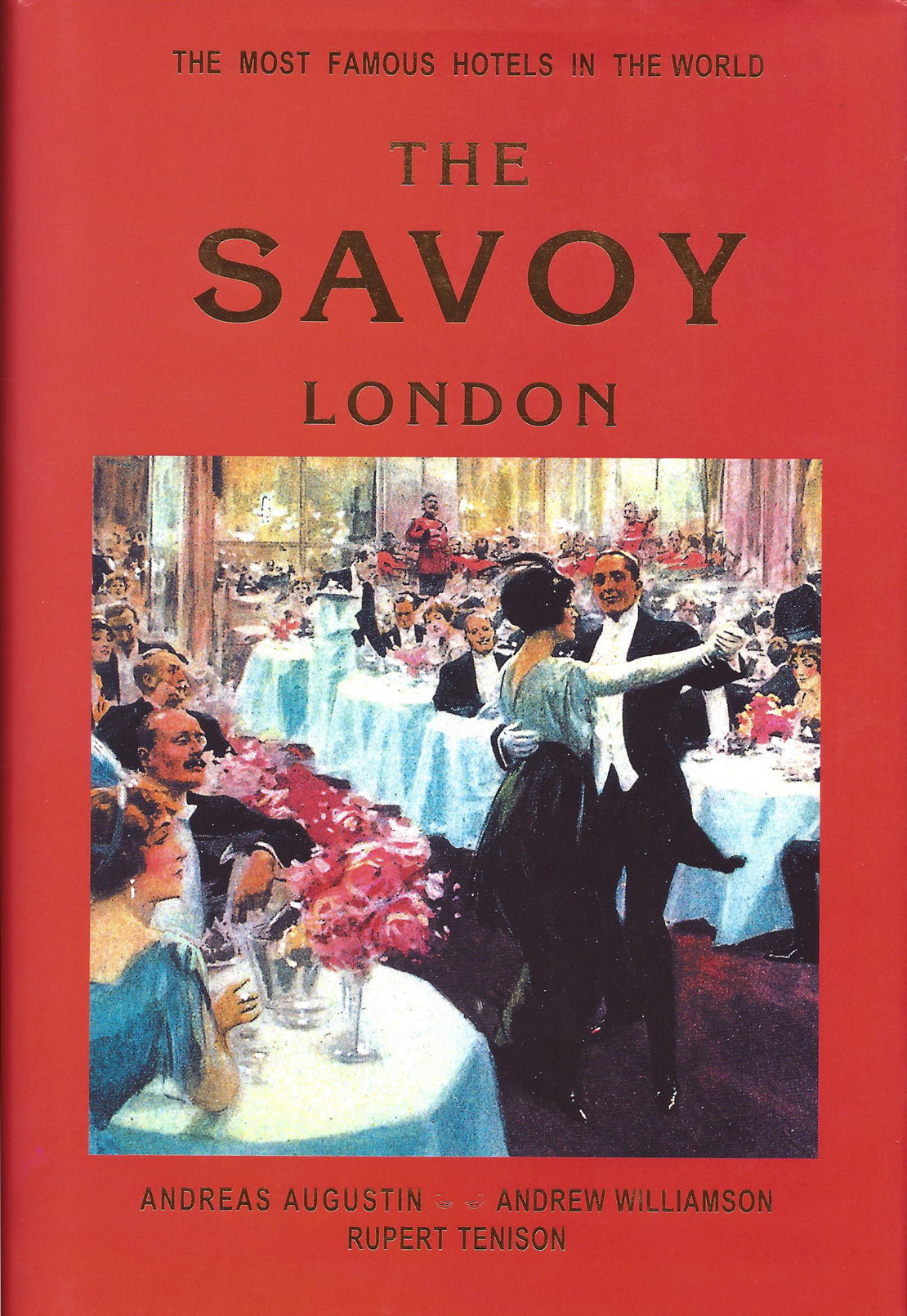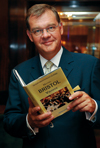Metropole – Hanoi, Vietnam (English Leather Edition)
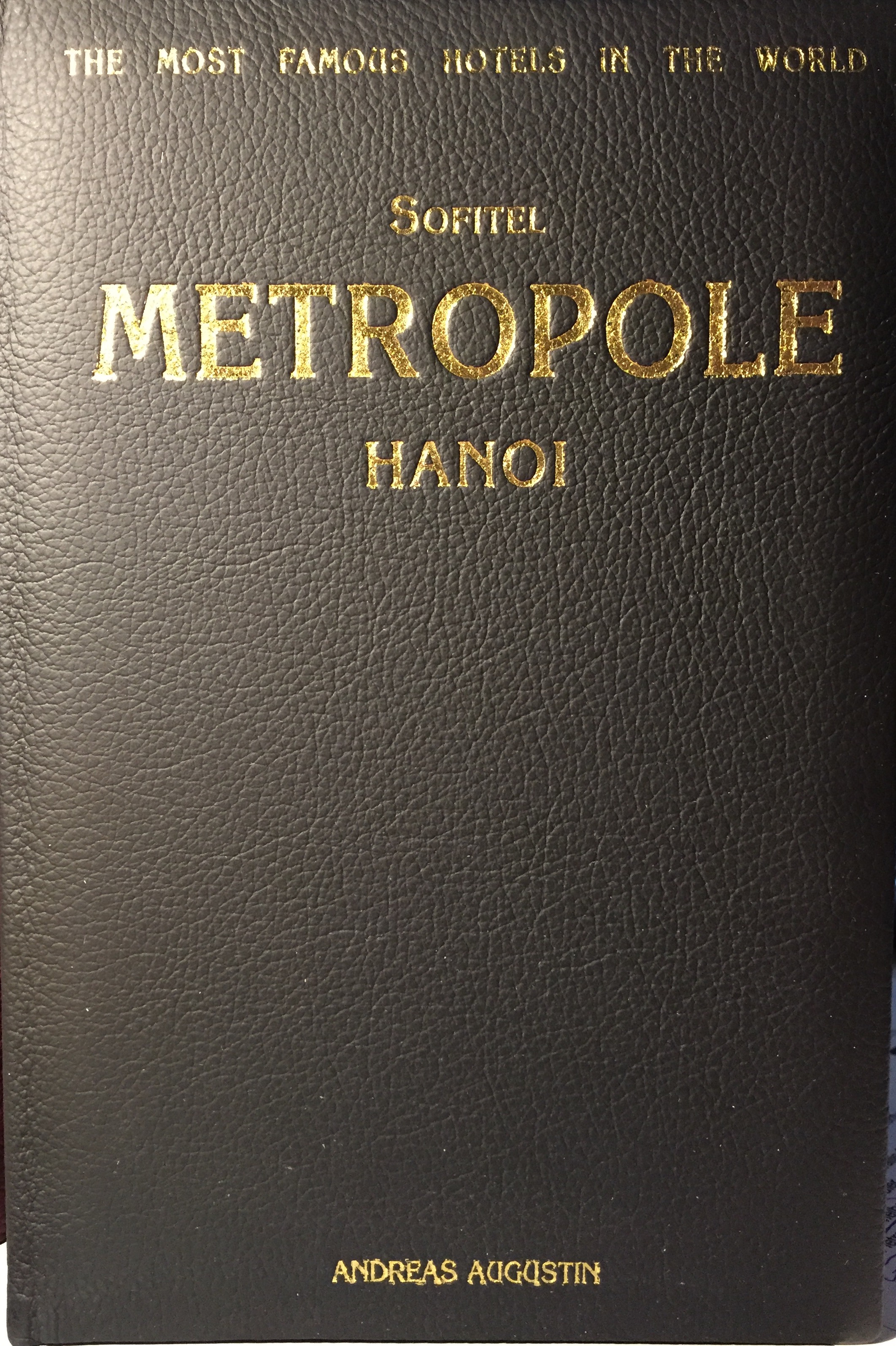
Author
Andreas Augustin
Pages
160
Photographs
Illustrations
Over 280 historic and contemporary photos, drawings and images
Leather-bound edition
Yes
Binding
Leather bound / gold stamping
Includes
2 postcards, 2 reading marks for HIM and HER
ISBN
981-00-1290-X
Size/Weight
160 x 235 mm, 720 g
Related Hotel
Price: € 133.00
Add to cartThe hand bound leather cover makes this a very special vintage collectors edition. Only 20 pieces of the 2007 edition were produced. They are autographed by the author.
Welcome to the Grand Hôtel Métropole Palace, as this wonderful hotel has been called on its opening day in 1901. Come and see the old colonists as they meet at the Café of the Metropole, sip a Nuoc-Soda and exchange the latest gossip. Stroll through the history of exotic Vietnam. Encounter Gustave-Émile Dumoutier, the fabled French anti-imperialist who opened the hotel in 1901. Meet André Ducamp, Dumoutier’s wealthy partner, who ran the hotel for almost three decades. Here the first “moving pictures” were shown, long before Charlie Chaplin and his wife Paulette Goddard arrived in person.
Meet authors like Pierre Loti and Marguerite Duras, British dramatists Somerset Maugham and Noël Coward and of course the “war correspondent” Graham Greene. Read about Jane Fonda and Joan Baez in the bunker of the hotel during air raids in the horrifying days of the Vietnam war. Read about Doi moi, meaning renovation, the new slogan that brought the country irreversibly to a new path. A path that lead to a total renovation of the Metropole.
Finally meet the people who make all this possible. The professionals behind the scenes. Welcome to the young country of the Vietnamese people with their natural talent for hospitality. A book full of fabulous historic and contemporary photographs, presenting the story of one of the last grand hotels of the exotic East.
Suddenly, at some distance, the Red River appeared. When the light is right, the name seems well deserved, indeed. We drove over the bridge. The Metropole’s Mercedes limousine swiftly reached the outskirts of Hanoi. We passed lakes, tree lined alleys. Old villas, magnificent buildings in the European style of the turn of the century made my head turn. Here and there the occasional modern office block. Bicycles, motorbikes, busy traffic. Then the car pulled up in front of the Hotel Metropole. A friendly smile, ‘Welcome’, and there I was. Franck Lafourcade, who has taken over from Richard Kaldor as General Manager, says hello. I get my preferred room, (one with a 15 at the end; 115, 215, 315) and I do not take the elevator. Staircases in historic hotels have so much character and the late Cyril Gardiner of the Galle Face Hotel in Colombo fame always said: "Andreas; take the stairs, it's better for your health." These stairs in the old wing have carried many famous characters upstairs: Graham Greene, Somerset Maugham, Jane Fonda, . . . A first stroll through the mild Hanoi night. The old Opera House gleams at a distance. It has been exquisitely restored to its former grandeur. Back at La Boutique I meet Tiana Silliphant, the charming Vietnamese Hollywood export. She tells me all about the shooting of Graham Green’s The Quiet American, Michael Caine, Brendan Fraser, US$ 30m, Sidney Pollack, screenwriter Christopher Hampton, . . . Within seconds megabytes of information flow. Where is my voice recorder? Tiana turns round: ‘Meet Nicole Routhier, she wrote The Foods of Vietnam, an excellent book!’ The next morning (talking about food): work-out at the gym, a dip into the pool. The calory gaining wonderful kitchens under Didier Corlou require some extra laps. Breakfast at Le Beaulieu. Lunch at the Spices Garden, the Met Pub or the Club Bar. Walking around the hotel takes you to the hotel’s own delicatessen, a Vietnamese silk fashion shop and Louis Vuitton’s elegant shop. I retire to the pub. A Jazz band performs. Until the 1880s there was a lake where I am sitting right now. The French spared no efforts to cultivate this area. ‘After a visit to Hanoi one is curious to learn what the French would have done to Singapore or Hong Kong if they had possessed them?’ wrote Alfred Cunningham in 1901. A stroll through the mild Hanoi night. Towards the dyke that protects the city from the regular threat of floods of the Red River. Behind its walls flows the mighty waterway. Once the river provided the only means of transportation between the outer world, the harbour at Haiphong and Hanoi. Then the Correspondance Fluviale plied its services up- and downstream. This was where they arrived. Paul Bert, Paul Doumer, and all the others. Gold-diggers in their own right. Adventurers, civil servants, explorers, visitors. So many characters, so many destinies. Here, one early morning, Gustave Dumoutier must also have stood. Waiting.
After having successfully completed historic research for Raffles in Singapore, The Peninsula in Hong Kong, The Oriental in Bangkok, Sacher and Vier Jahreszeiten (Hamburg) in Europe and Grand Hotel Europe in St Petersburg (Russia), one day I received a phone call from Richard Kaldor, general manager of the Hotel Metropole in Hanoi, Vietnam: ‘Andreas, could you come and research the history of our hotel?‘ ‘Of course,’ I replied fondly, ‘give me an idea of when it opened?’ ‘Well, that’s the problem, ‘replied Kaldor. ‘It was 1896.’ ‘That’s no problem,’ I said. He continued: ‘Or maybe in 1906. We simply do not know!’ Intrigued, I said yes, I would come to research the hotel’s history and try to pinpoint the exact opening date. I travelled to Hanoi to see the hotel’s archives; there was nothing but one old black and white photograph showing the hotel around the turn of the last century. I started to visit the city’s public archives, accompanied by my Vietnamese assistant, Mrs. Tuan Thi Le Diem, a local historian. We scrutinised documents from French colonial days: building records, annals and chronicles. ‘They were all relocated to France in 1954,’ was the standard answer. That was the year when the French left Tonkin, as Vietnam had been called in colonial times. So I went to Paris. But in the City of Light, I was told: ‘You have to go to Aix-en-Provence, to our colonial archives.’ So on I boarded a TGV and headed south to Aix, and the Archives d’Outre-Mer (colonial archives). Richard Kaldor (right) welcomes the President of France, Jacques Chirac at the Metropole, Hanoi. I hadn’t reckoned with the notorious red tape of the French bureaucracy. ‘If you don’t have a reference number, we are unable to give you any documents,’ I was told. ‘The numbers are in the reference catalogue. However, I am afraid, we don’t have a catalogue for the archives from Vietnam. We did not bring it from Hanoi. We had to leave the country in a rush. Very troublesome, you know. But go to the public archives in Hanoi and search for the reference number.’ Back to square one. It was a 9,200 km flight between the archives and the reference catalogue. Usually it is five metres. Back in Hanoi I discovered the catalogue. Then, with a handful of reference files I flew back to Aix-en-Provence. I received a bunch of files and copied hundreds of pages. Slowly the history of Hanoi as the beautiful capital of Tonkin unfolded. I met the old colonialists. I conetrated on the 1880s. I made the acquaintance of a character called Gustave-Émile Dumoutier, the son of an industrialist born in France on 3 June 1850. Dumoutier was made Tonkin’s Chief Education Officer on 5 June 1886. He also founded the Académie Tonkinoise. Alongside him, another key protagonist rose from the mists of history: André Ducamp, a business man in Hanoi in the 1890s. After many interviews and meticulous archival research, I was able to prove that in 1896 and 1897 the Hanoi Hotel was the only notable hotel in the city. The guidebooks of that time didn’t know anything of a Metropole Hotel either. Slowly I narrowed it down and continued to work myself through time. Parallel to my research, our UK-based historian Andrew Williamson started unearthing historic newspaper articles. We concentrated on 1902 and 1903. Suddenly the hotel appeared. It was mentioned in every guide book, in newspapers and travel articles. In the British Library we found a 1902 account of the hotel from a certain Alfred Cunningham, who was maybe one of the Métropole’s first guests. He was clearly impressed: ‘The most important hotel in Hanoi is the Hôtel Métropole. It is a splendid building, only very recently erected, and is situated on the boulevard Henri-Rivière, immediately opposite the Résidence Supérieure.’ Bingo! From now on the search went backwards. To cut a long story short: we were able to pinpoint the opening date on the month. During the weeks of August 1901, the Grand Hotel Metropole Hanoi had opened its doors. It had become the joint venture of André Ducamp and Gustave-Émile Dumoutier. Ducamp became its first general manager. We even found files of him applying for the permission to install bow arch lamps in front of his hotel. Now our search concentrated on related material like photographs, luggage stickers, postcards, the usual stuff. We stumbled upon a picture of an electric tramway carrying Hôtel Métropole advertisements on their roofs. From the United States we received a 1920s label of the 'Grand Hotel Metropole', designed by Dan Sweeney(a seasoned illustrator who drew posters for leading Asian hotels, among them The Oriental in Bangkok, The Peninsula in Hong Kong, the Majestic, the Astor House and the Palace in Shanghai, the Manila Hotel and the Continental Palace in Saigon). Slowly I was able to build a world with figures and facts. The book took on shape. In this volume you now found the characters of the past parading through the pages in the glimmering light of a new rising wealth, created by an unbelievable rubber boom. I remember that my editor never forgave me the sentence: 'It was the time when men were made by rubber, long before rubber was used to prevent that men were made'. We discovered a charming link to the Paris Hotel Scribe, which today is a sister-hotel of the Metropole. Both are managed by Sofitel, both hotels can today claim that they are 'historically listed' as the premiere venues for "moving pictures". The Scribe even housed the world premiere, while the Metropole was Indo-China's first venue to show movies. We found out that the restaurant cars between Hanoi and the cities of Vinh, Hue and Tourane in the south were operated by the Compagnie Française Immobilière, the parent company of the Hotel Métropole. Suddenly astonishing printed material appeared and we started getting an pictorial impression of the hotel in the past. We were able to prove that the Metropole was visited by the great actors visited by the great actorCharlie Chaplin and his wife Paulette Goddard (right). Authors like Somerset Maugham and Graham Greene and many others were her. The father of Vietnam, Ho Chi Minh had wonderful stories connected with the hotel. During the Vietnam war Jane Fonda spent two months in her suite at the hotel. Joan Baez cheered the spirits by singing in the hotel's bunker during US air raids. Suddenly we entered a field of research were we could relate to people who had actuylly been working at the hotel during the 1960s and later. They were still alive. Former staff turned out to visit me at the hotel for an interview. They brought their memoirs along with photographs and we had a great time reviving the good old past. Over the next years – together with the hotel – famoushotels.org developed a history PR scheme, based on our research. Today the hotel has suites named after these outstanding personalities. We have supplied the photographic documents and the related stories. We are proud to have such a hotel partner making so elegantly use of our research material. The old photograph of the hotel which I had found in the hotel in the beginning has been carefully restored and coloured. It graces the cover of our 160 pages hard-case book. The first edition appeared in 1998. Ever since we have updated every edition with new material. While we are speaking the next edition appears – and only last week we had the pleasure of acquiring another great photographic document – for the book's next edition.
Andreas Augustin
presents the history of the
Hotel Metropole, Hanoi
in the series
The Most Famous Hotels in the WorldTM
Thanks to all the general managers of the hotel, who supported the continued research into the rich history of this icon of Asian hospitality industry. Spiritus rector of the book is Richard Kaldor, general manager between 1996 and 2000, who had the vision and enthusiasm to request a well researched history of his hotel. Greatest thanks to the board of directors of the Thong Nhat-Metropole Hotel Joint Venture Company.
I am most indebted to Franck Lafourcade, who led the hotel into this millennium as its general manager, who not only helped to update this book, but gave it a wonderful presentation during the year of the hotel’s centenary. He returned to the hotel in 2013 to manage it again. My personal thanks to Gilles Cretallaz, who continued the tradition of presenting the hotel’s history. Kai Speth was the driving engine behind the Path of History, the permanent history exhibition at the hotel, and the unearthing of the long hidden bomb shelter.
We thank HE Deanna L. Horton, HE Susan Boyd, former Ambassador of Australia to Vietnam, HE Serge Degallaix, former Ambassador of France to Vietnam, to Tore and Vigdis Sund, Michael Rastrup Smith, Sam and Rosetta Miller, Patrick Antona, Robert Farnsworth and Yasmine Bombardier.
Credit must also go to Guy Poujoulat and his successors, Marc Bégassat and Charles-Henri Chevet, who – as resident managers – accompanied this project. Merci to Carl Sladen, Director of Sales & Marketing, who shared with us so much valuable information, Thibault Souchon, André Bosia, Denis Groison, Hoang Anh Tuan, Arie Sunia, Léa Burel and all the others of the wonderful staff of the Metropole who makes each stay such a memorable one.
Credits to Sarah Grant who successfully set up the hotels PR of ce when so little was known about its past. The help of her successor Ms Nguyen Thanh Thuy and her assistant Nguyen Hai Au made work on this book so much easier. For the edition of 2008 we thank Nguyen Dinh Thanh. The 2010 and 2012/13 editions were in the hands of Ms Lê Thị Nhung. 2014 were coordinated by Ms Huyen Ha and assisted by Ms Ly Le.
Further thanks go to Ricardo Perran, the rst general manager of the hotel after its extensive renovations, and to his former assistant Edouard George for his collection of old photographs of the hotel and Hanoi. A word of special thanks goes to Dr Stein Tonnesson of the Nordic Institute of Asian Studies who helped persuade Richard Kaldor that in fact the hotel’s story was within reach, to Gerard Toupet, the general manager of the hotel Scribe in Paris, to Shimon Tokuyama of Mitsubishi Corporation and to Marc Charuel, Directeur de l’iconogarphie Valmonde.
Luong Ngoc Khanh, former front office and business development manager, supplied the most important assistance. It was good to talk to Frederick Rech, Richard Eliot, Le Hong Hai, Duong Trung Quoc of the Revolutionary Museum and Vu Quoc Khanh of ‘Viet Nam Pictorial’, Jeanne Loubet, Le Van Phuc, Do Thi Duong Minh, Mike Fogata, Madam Nguyen Thi Xuan Phuong, Maitre Duong Van Dam, Pierre Schoendoerffer, Tiana Thi Thanh Nga and James Compton.
Greetings to Australia, where Beris L Gwynne and Sarah Hodgkinson recalled their days at the Metropole – then Thong Nhat Hotel – during the early 1970s. Thanks also to Pierre Marbote and to Jeanne Réau in Paris. Special thanks to US journalist Mark Sommer and all the others, who were not named before and deserve a deep bow for their very kind help.
Ronnie Tan Virata, Director of Engineering, was instrumental in setting up the Path oF History at the hotel.
Photographs, drawings, maps and other illustrations: Imperial War Museum and British National Library, London; Famous Hotels Main Archives, Vienna; Archives Nationales, Paris; Centre des Archives d’Outre-Mer, Aix-en-Provence; Institute for information – Social & Science, Hanoi; National Library, Hanoi, Giovanni Di Giorgio, Northboer, Heimo Aga.
Collections Edouard George, Beris Gwynne, Peter Fleming, Cao Xuan Nha, Sarah Hodgkinson, Archives of the Hotel Metropole.
Historic research assistance: Andrea Riegl, Tuan Thi Le Diem, Joao Mimoso
Production: Harrison Dolittle
Editor: Andrew Williamson and Thomas Cane
Edited by Thomas Cane
Historical advisor and curator of THE PATH OF HISTORY: Carola Augustin
There is a limited leather-bound edition available.
All rights in this publication are reserved. This book and no part of it, be it historic or contemporary images, text or quotes, may be reproduced, stored in a retrieval system or transmitted in any form or by any means, electronic, mechanical, photocopying, recording, or otherwise without the prior permission in writing of the copyright owner.
Important note to publishers
In particular all historic images were edited and restored by famoushotels and are as such subject to international copyright laws. For a maximum of quality they can be obtained from:
archives@famoushotels.org www.famoushotels.org www.pathofhistory.com
© 1998–2017 / AndreAs Augustin ISBN 978-3-900692-21-6

